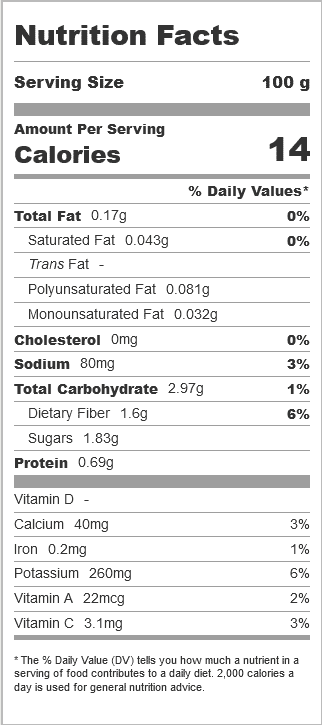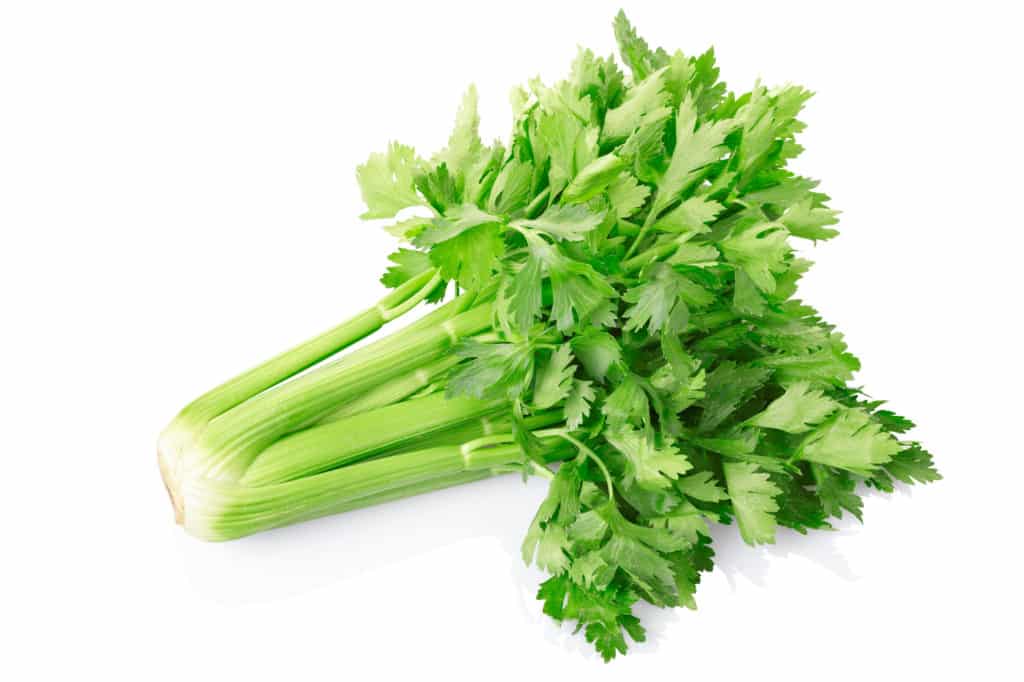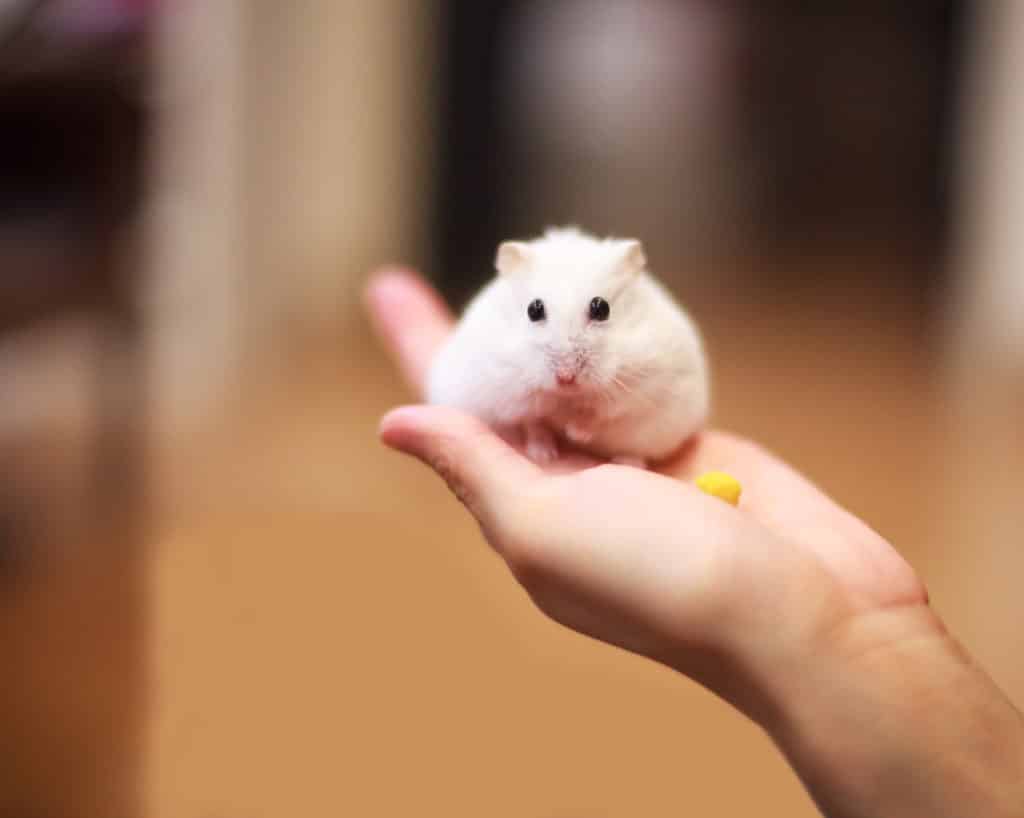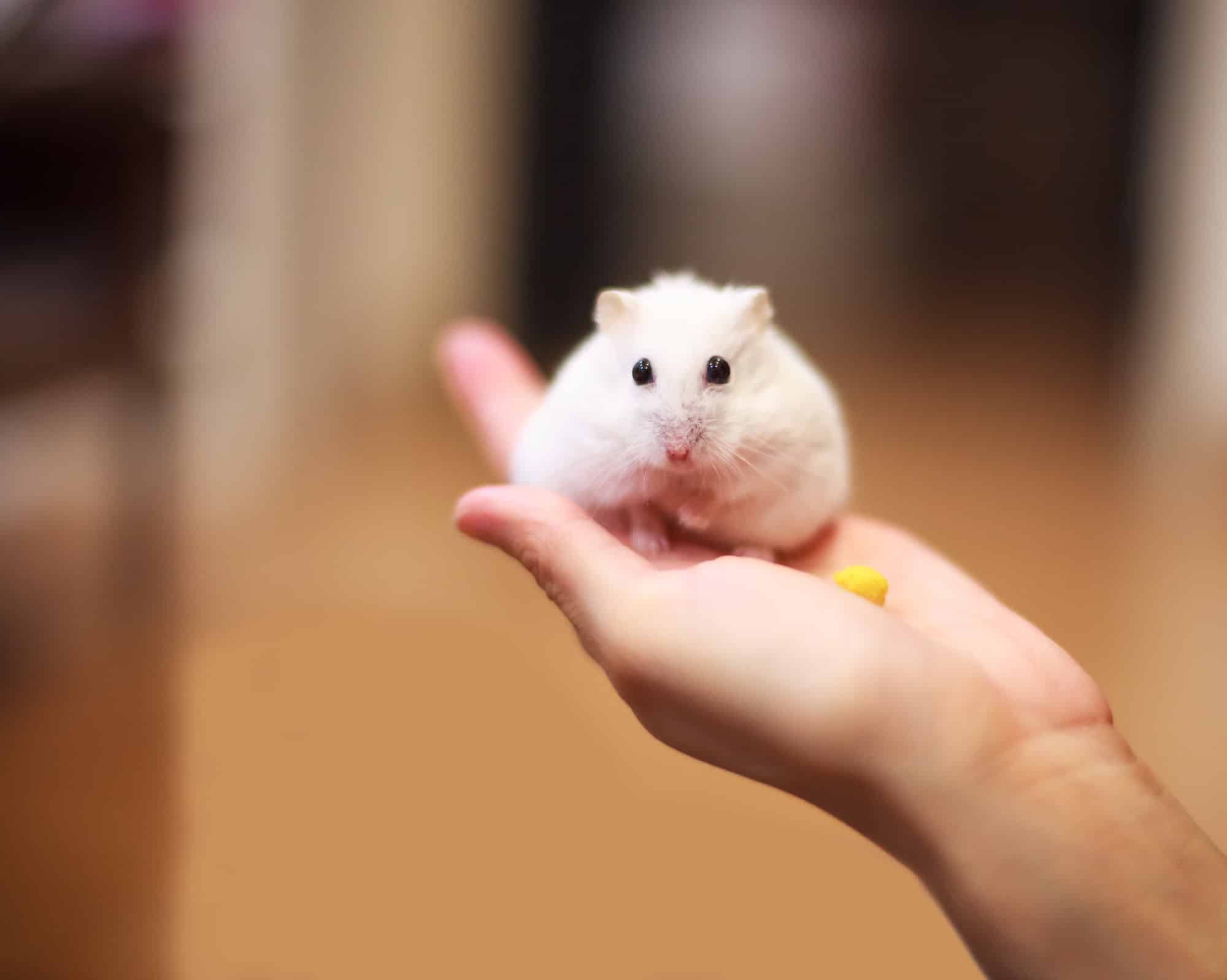Celery is a vegetable that is greatly beneficial for health. It is eaten in several countries across the world. If you are a hamster owner who loves celery, you may have often wondered if hamsters can eat celery. But you don’t have to worry anymore. This blog post will help you find out if hamsters can eat celery, how much they can eat, and what to watch out for.
Nutrients in Celery
Before we look at whether our hamsters can eat celery or not, let’s look at the list of nutrients present in 100g of Celery.

Source: Fat Secret
Can hamsters have celery? Is celery safe for hamsters?
Celery is safe for hamsters when fed in small quantities and not too often.

Health benefits of celery
1. Celery is a low-calorie food rich in water and dietary fiber. Indeed, 95% of celery is just water. So, eating celery will not only keep your hamster hydrated throughout the day but also help keep his weight under check.
2. Every oxygen-breathing organism gets its energy through cellular respiration. During this process, oxygen and carbohydrates are broken down to carbon dioxide and water. Even though this process produces the energy we need to survive, harmful substances called free radicals are also produced in this process. These free radicals are highly unstable molecules that require electrons to become stable. In search of these electrons, these molecules can strip away cells, membranes, and the DNA in our bodies, thus causing great damage that can at times be irreparable. They can also cause various types of cancer.
But luckily, substances called antioxidants stop these free radicals by providing the electrons they need. Thus, they stabilize the free radicals before they can cause damage to our bodies.
Celery has several types of antioxidants like apigenin, saponin, tannin, luteolin, kaempferol, –p-coumaric acid, caffeic acid, and ferulic acid (Source: PubMed).
Apigenin reduces blood pressure, possesses antiviral antibacterial properties, and reduces inflammation (Source: PubMed). Saponin protects the body from cancers and reduces blood cholesterol levels (Source: PubMed). Tannins are chemical substances that act as both primary and secondary antioxidants. As primary antioxidants, they have anti-carcinogenic, anti-mutagenic, and antimicrobial properties. As secondary antioxidants, they can retard oxidation itself. But they can also reduce digestion and the absorption of some vitamins and minerals (Source: The Academy of Sciences, Poland). Luteolin has anti-tumor and anti-inflammatory properties (Source: PubMed). Kaempferol acts as an anti-carcinogen that not only inhibits the growth of cancer cells but also kills them while preserving normal body cells (Source: PubMed). The other compounds in celery also have antioxidant properties.
3. The chemical substances in celery possess antioxidant and anti-inflammatory properties. These chemical compounds offer protection to the digestive tract. Moreover, a compound called apiuman that is present in celery reduces stomach ulcers, modulates stomach secretions, and improves the linings of the stomach. Thus, celery can help keep the digestive tract healthy (Source: Healthline).
4. Essential minerals like calcium, magnesium, and sodium present in celery can neutralize the acidity in the food your hamster eats. Moreover, these minerals offer other health benefits as well. Magnesium helps in keeping the bones strong, blood pressure normal, and the heart rhythm steady (Source: WebMD). Calcium not only helps keep the bones and teeth strong but also maintains the normal functioning of the heart, muscles, and nerves. Sodium is needed by the body to maintain the proper balance of water and minerals, contract and relax muscles, and conduct nerve impulses (Source: Harvard).
5. Celery also contains important vitamins like Vitamin A, Vitamin K, and Vitamin C. Vitamin A helps improve vision and immunity and keeps skin healthy. Vitamin K helps in coagulating blood. It also plays a role in keeping the bones healthy. Vitamin C is needed for the growth, development, and repair of the tissues in the body.
6. Celery has a low Glycemic Index of 15. So, it aids weight loss, reduces blood sugar levels, and reduces the risk of Type-2 diabetes and heart disease (Source: Healthline).
Risks
Celery is a healthy vegetable that your hamster can eat. However, you shouldn’t give your hamster too much celery at a time or too often. If you do so, the following problems can occur:
1. Celery is a low-calorie food. So, eating too much of it can lead to uncontrolled weight loss and malnutrition (Source: Live Science).
2. Celery contains a good amount of dietary fiber. Even though fiber is good for health, too much of it can cause gas, bloating, and diarrhea. And diarrhea in hamsters can cause Wet Tail, which is a life-threatening medical condition.
3. Feeding too much uncooked celery too often can interfere with the iodine functioning of the thyroid glands, making them swell. This can cause hypothyroidism, swelling of the neck, and eventually cause breathing problems (Source: PubMed).
4. Celery is one of those food items that contain a lot of pesticides. It stands eleventh in the 2021 list of Dirty Dozen, a list compiled by the Environmental Working Group ranking food items in the decreasing order of the number of pesticides found in them (Source: EWG). So, celery should be washed thoroughly before being fed to hamsters. If possible, buy organic celery from local farmers instead of buying celery from supermarket chains.
5. Celery is not a high-sodium food item. But it contains more salt (80mg per 100g) than many other vegetables. So, if you feed too much celery to your hamster, he can get dehydrated quickly.
Different hamster species vs. celery
Celery is a nutritious, crunchy, and delicious treat for hamsters. But can all hamsters eat celery?
Different breeds of hamsters differ greatly in size. So, the answer to the question “Can all hamsters eat celery?” really depends on which hamster species you are talking about.
Can Chinese dwarf hamsters eat celery?
Chinese hamsters are small hamsters. That is why they are categorized as dwarf hamstersTheir digestive systems are not that strong. So, it can upset their stomach. Some pet owners even found their dwarf hamsters suffering from diarrhea after eating celery (Source: Hamster Hideout). But that doesn’t mean you have to avoid celery completely.
You can only give your dwarf hamsters a very small shredded piece of celery twice a week. But you should observe their stools for the next 24 hours to make sure that they don’t get diarrhea. If they get diarrhea, don’t give celery to them again.
Can Campbell dwarf hamsters eat celery?
Campbell dwarf hamsters are also small hamsters. But they can eat celery. However, they shouldn’t be fed more than a very tiny piece of celery twice a week.
Can Djungarian hamsters eat celery?
Yes, Djungarian hamsters can eat celery. But since they are dwarf hamsters, they can eat only a tiny piece of celery twice a week.
Can Roborovski hamsters eat celery?
Roborovski hamsters are the smallest hamster species. They are also used to desert conditions. Hence their bodies have evolved to conserve water naturally. Therefore, food items with a lot of water content can give them diarrhea. So, you must be careful while giving them celery. Like the other dwarf hamsters, you can give them a small piece of celery twice a week. But you should watch their stools for any sign of diarrhea. If they get diarrhea after eating celery, don’t give them celery again.
Can Syrian hamsters eat celery?
Syrian hamsters are the largest pet hamster species. So, their digestive systems can tolerate more food items. Therefore, they can eat celery. You can give them a quarter teaspoon of celery per week (Source: Hamster care).
FAQ
How to feed celery to your hamster?
As explained before, celery sold in supermarkets can contain a lot of pesticides, which are harmful to your hamster. So, buy organic celery from local farmers if possible.
Don’t buy Blackheart celery, as it can contain pests that are harmful to your hamster. Buy celery that doesn’t have any brown spots.
Before you give celery to your hamster, wash it properly. Then cut it into small pieces so that your hamster doesn’t choke on it.
Can hamsters eat celery leaves?
Yes, hamsters can eat celery leaves too. But they may taste bitter. So, your hamster may not like the taste.
Can hamsters eat celery stalks?
The teeth of hamsters keep growing till their death. So, they need to wear them down constantly. Celery stalks are perfect for that. But you shouldn’t give a full-size celery stalk to your hamster. You should first remove the strings and shred the stalk into small pieces so that your hamster doesn’t choke on it.
Can hamsters eat cooked celery?
Even though celery can lose its fibrous nature upon cooking, cooked celery is not harmful to hamsters. So, your hamster can eat cooked celery (Source: Squeaks and Nibbles). But your hamster may not like it because he might prefer raw, dry food.
Fun Facts
What is celery?
Celery is a plant that mostly grows in marshes. It belongs to the family Apiaceae. The long fibrous stalks of a celery thin out into leaves. Around the world, its stems, leaves, and seed powder are eaten.
Celery is grown worldwide. But the biggest producer of celery is the USA, followed by Mexico.
There are three types of celery (Source: Garden.eco).
- Stalk (Pascal) celery – It has thick stalks that are used raw or added to stews and soups. This is the most common type of celery.
- Leaf celery – It has thinner stalks than stalk celery. Its leaves are used for seasoning. This type of celery is used in Asia in a variety of dishes.
- Celeriac – It has bulbous roots that are either roasted or added raw to salads.
Origin
Celery is thought to have originated in the Mediterranean region of Europe. Archaeological remains suggest that humans first transported celery seeds sometime around 4,000 BC (Source: National Public Radio, USA).
But our ancestors did not eat the vegetable for its taste. Ancient Greeks, Romans, Egyptians, and Chinese used it as an aromatic agent and a medicinal plant. Most people, especially those in Egypt, Rome, and China, used it as an aphrodisiac and to treat hangovers, even though we don’t have any medical proofs that it helps with either of these conditions. Celery was also used to weave victory crowns for victorious athletes in Greece, Rome, and Egypt. A wreath made of celery was even found in the tomb of the famous Egyptian Pharoah Tutankhamun.
Only in the 1600s did people start using celery for culinary purposes, probably in France or Italy.
Summary
Celery is a great nutritious food for hamsters because of its health benefits.
- Celery is a low-calorie food that keeps your hamster from getting fat.
- It contains several antioxidants that contain antibacterial, anti-carcinogenic, and anti-mutagenic properties. They also reduce blood cholesterol levels.
- Celery contains a chemical compound that helps keep the digestive tract healthy.
- It contains important vitamins like Vitamin A, Vitamin K, and Vitamin C.
- It contains important minerals like magnesium, calcium, and sodium.
So, celery can be a great addition to your hamster’s diet if fed in limited quantities once or twice per week. But buy organic celery whenever possible. Cut the celery into small pieces before giving it to your hamster.



